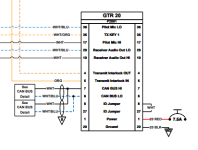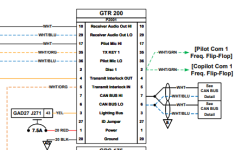I just installed a new G3X system with all new Garmin LRUs for instrument flight. During an initial check-out flight, the entire system went down with red X’s everywhere on both G3X displays. AHRS stayed alive via the backup RS-232 interface, but both COMs went dead as well as the GEA24. The failure lasted for 5 minutes and slowly everything came back online. Fortunately, I wasn’t talking to ATC and was VFR at the time. BUT, it would have been very unpleasant if I was talking to ATC or was flying in IMC. I also have a G5 backup, but losing communication radios would be a big problem. Is there any way to keep the com radios working even if the CAN bus fails?
Thanks, Mike
By the way, the problem was a cold solder joint at the Garmin autopilot servo.
Thanks, Mike
By the way, the problem was a cold solder joint at the Garmin autopilot servo.





